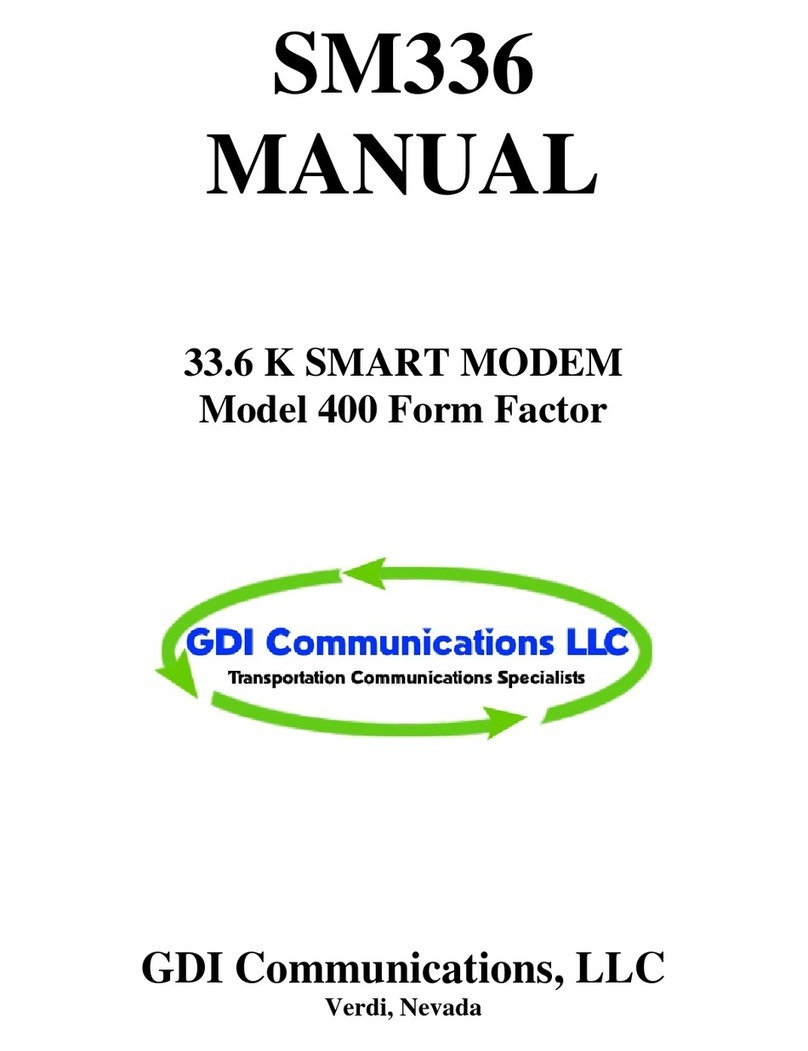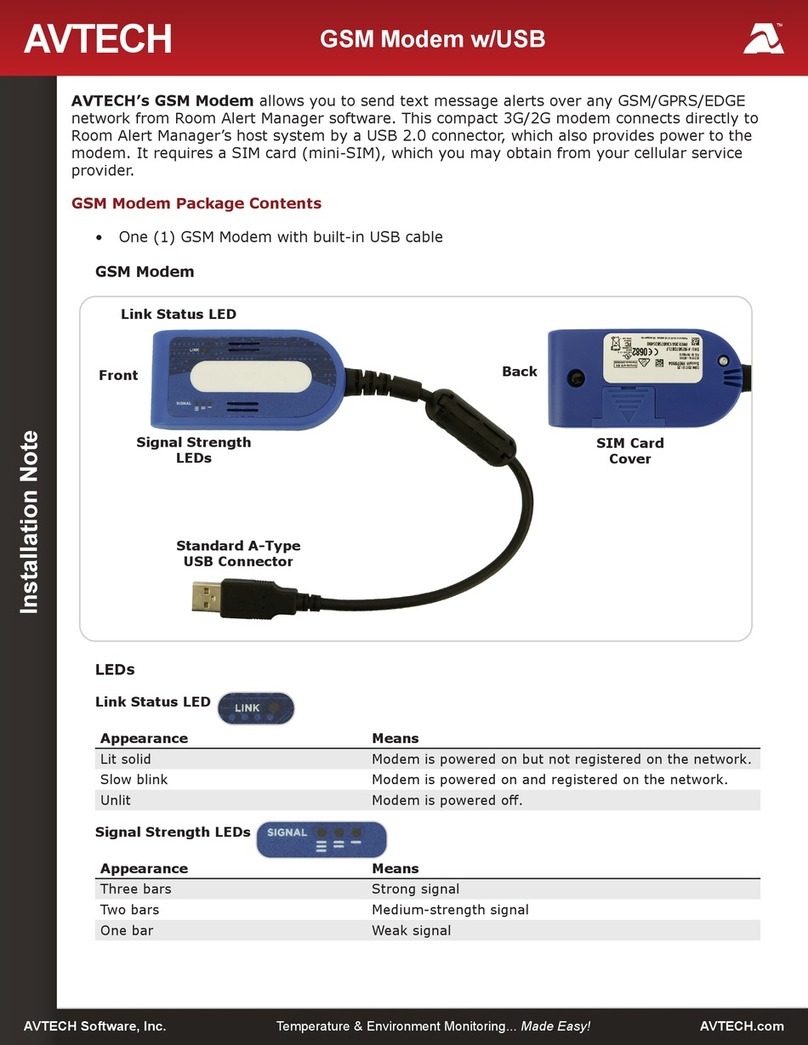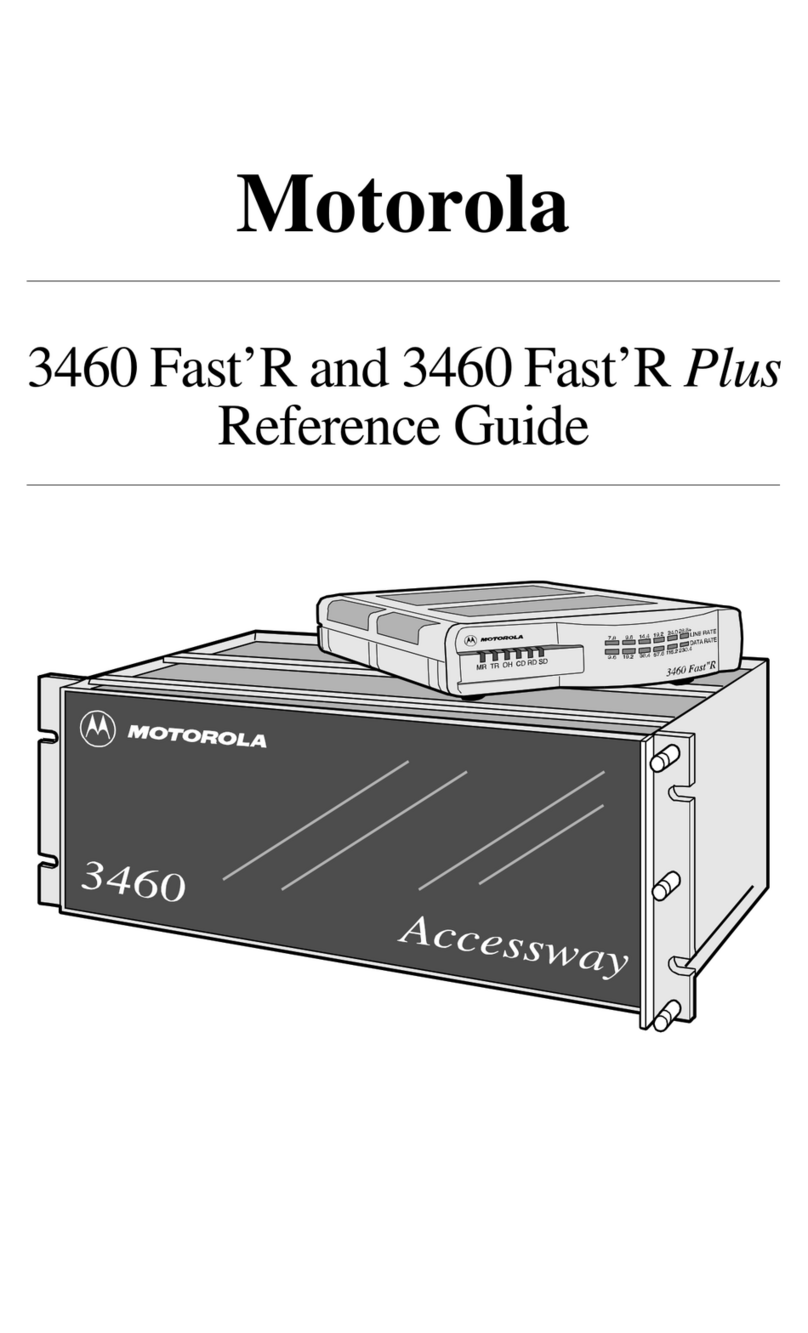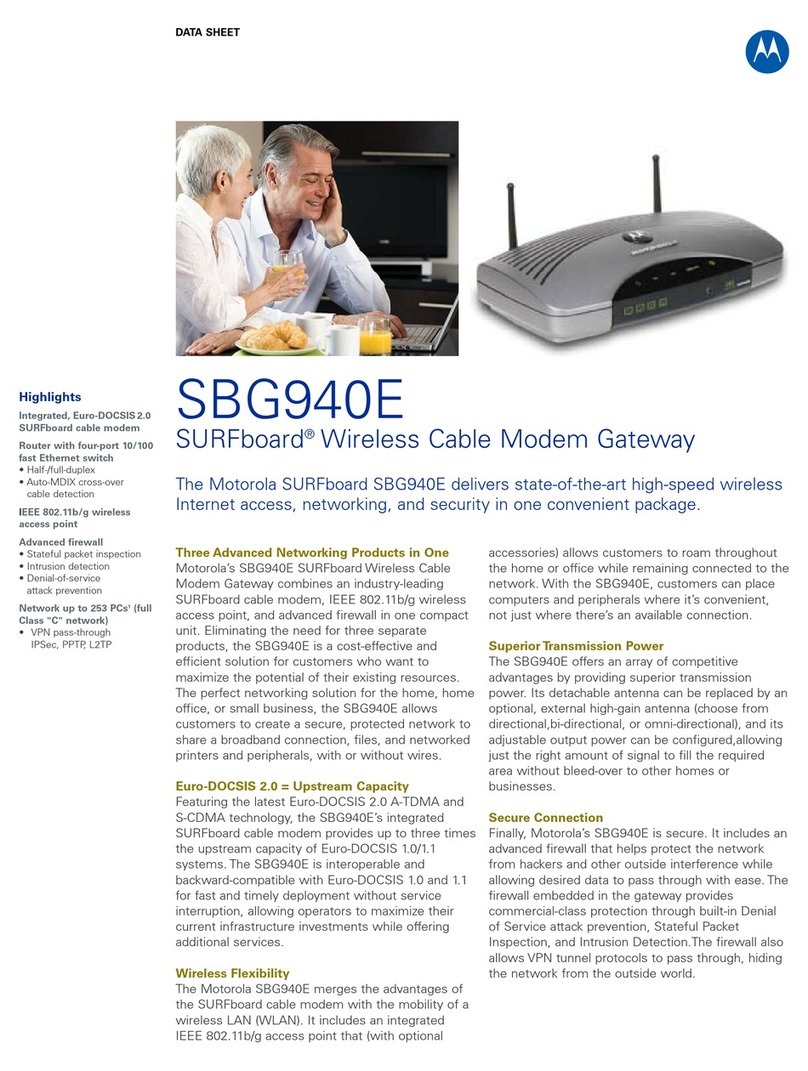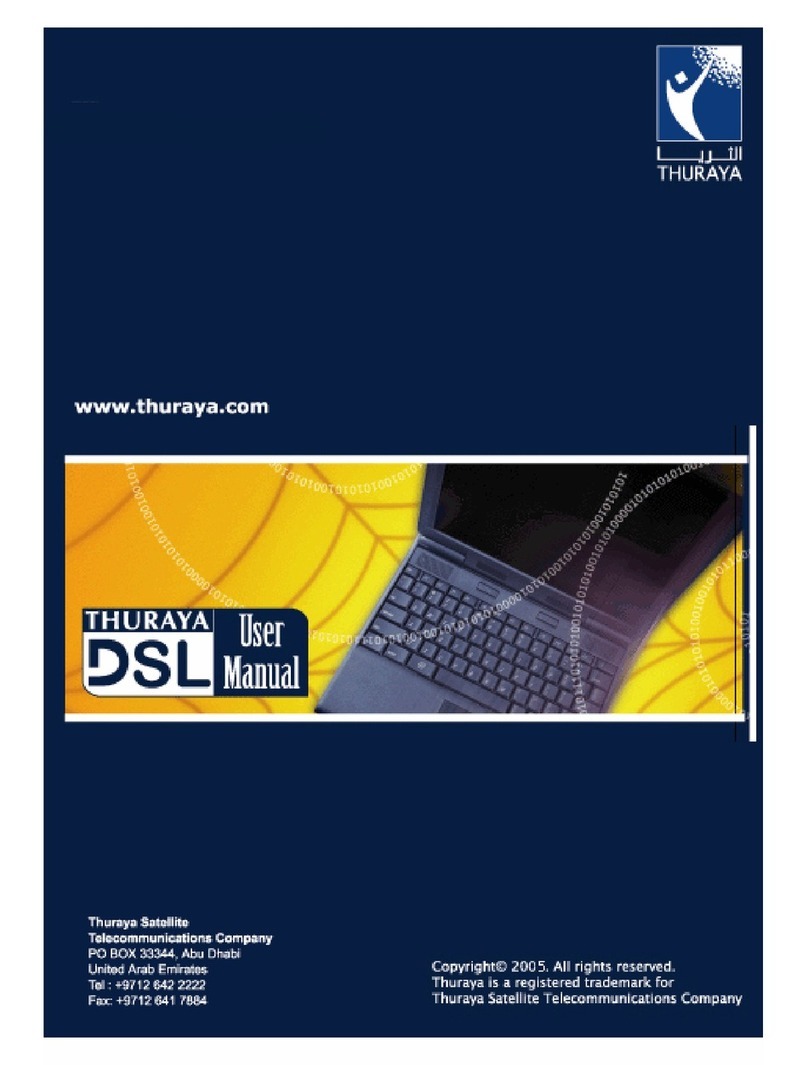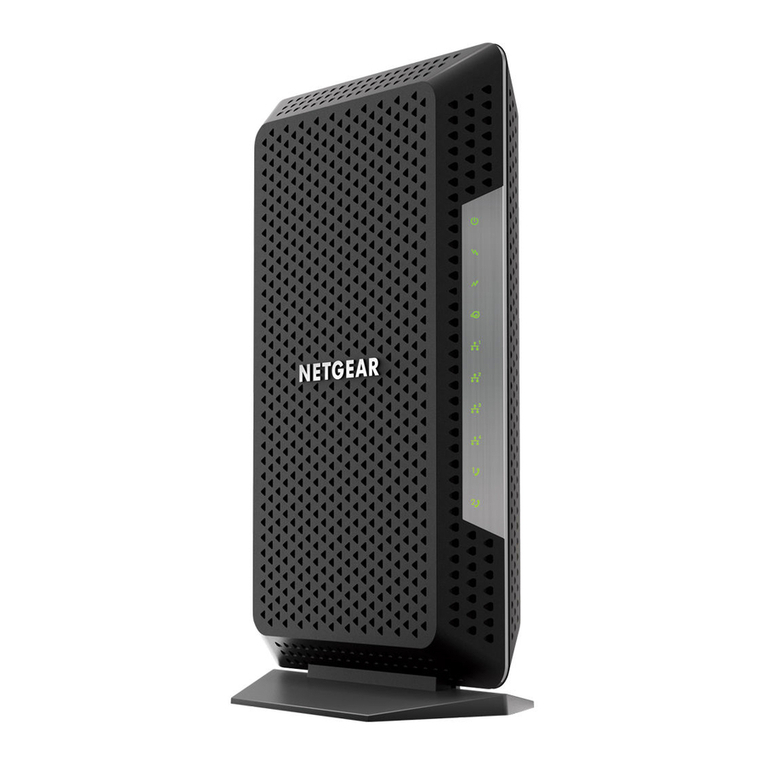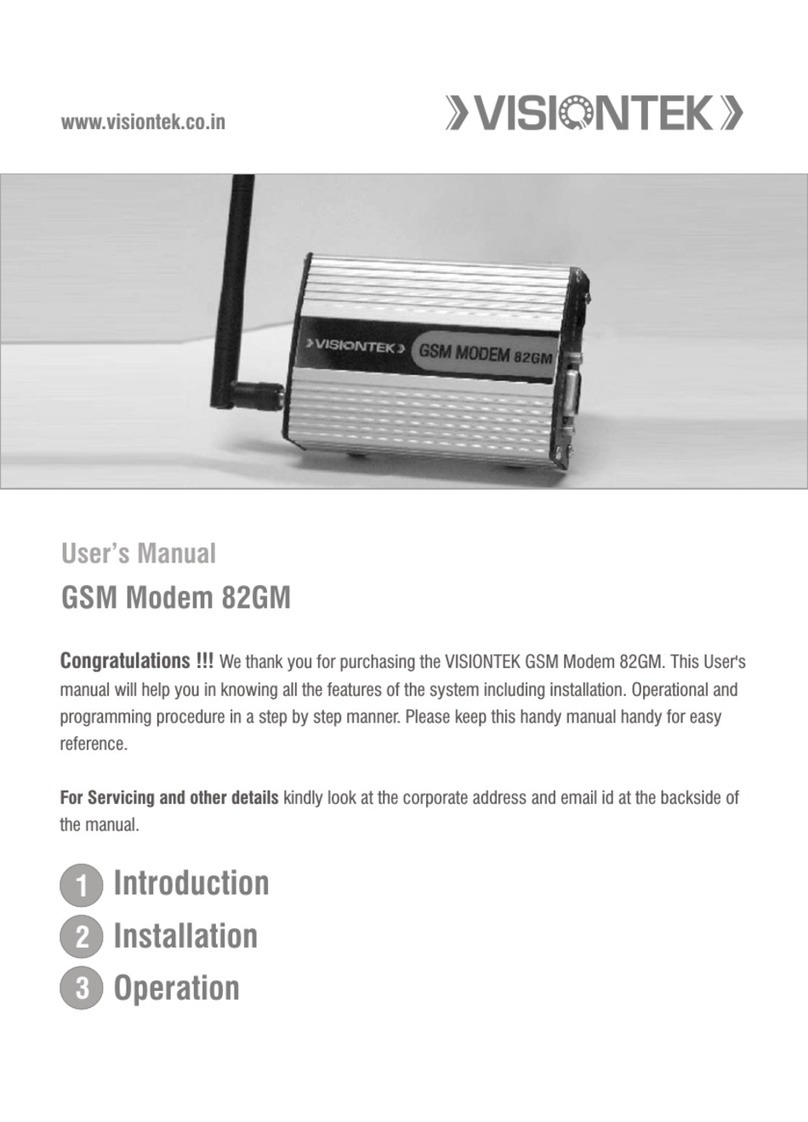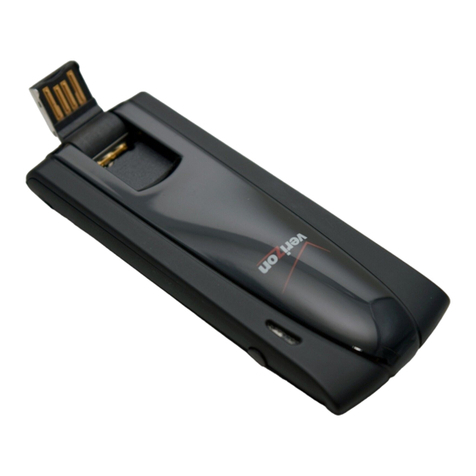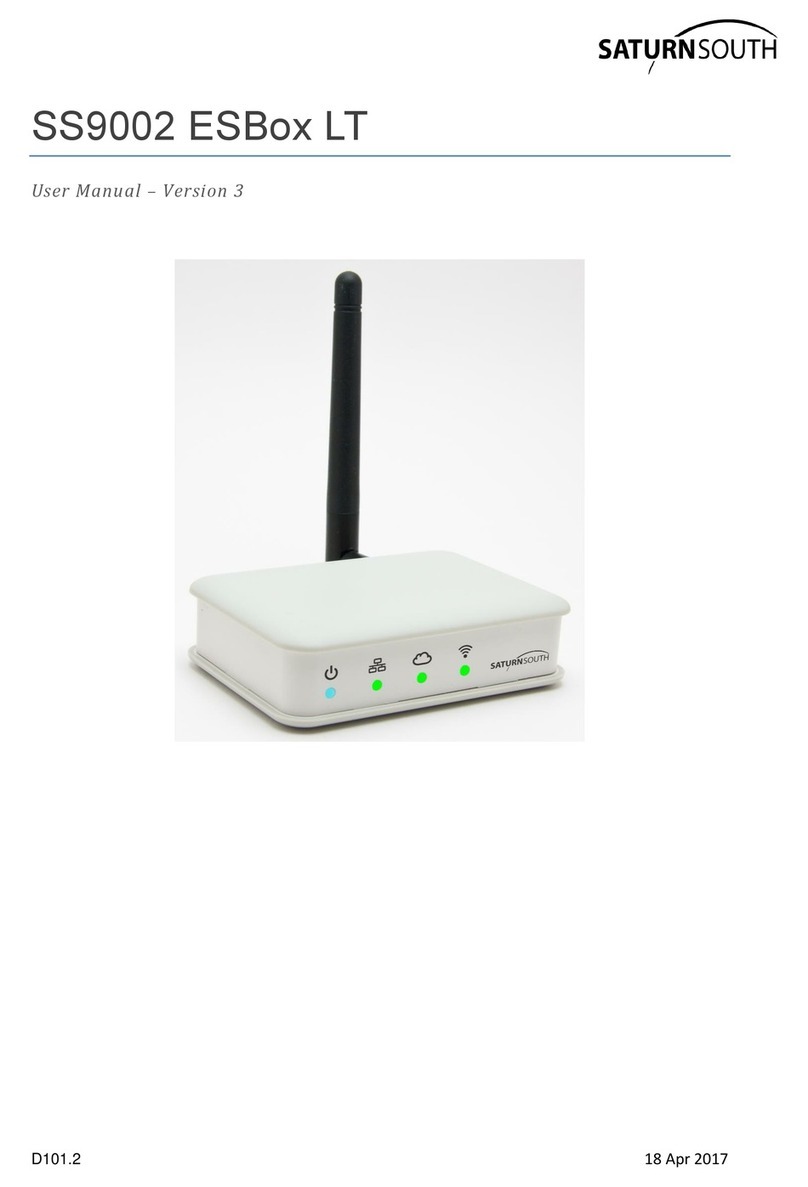GDI COMMUNICATIONS FLD2SA Series User manual

FLD2SA-1S
FLD2SA-2S
Manual
Dual Port Fiber Optic Modem
Standalone
A00477-3 Rev. A
For FLD2SA A00197-3 Rev. A and newer
Serial numbers FLD-700084SA and up

GDI FLD2SA-1S & FLD2SA-2S Manual
A00477-3 Rev. A
GDI COMMUNICATIONS, LLC
879 Deming Way
Sparks, NV 89431
Phone (775) 345-8000 Fax (775) 345-8010
Proprietary Data
This document contains confidential, proprietary
data with all rights and titles reserved by
GDI Communications LLC. By accepting this
document, the recipient assumes custody herof
and agrees not to dislcose this data or any portion
of this data to any unauthorized person without
the prior written consent of GDI Communications
LLC. Recipient further agrees not to incorporate
these drawings, specifications or technical
information, in whole or in part, in any other
product or endeavor.
THIS LEGEND SHALL BE INCLUDED ON
ANY REPRODUCTION OF THIS DOCUMENT



TABLE OF CONTENTS
GLOSSARY.................................................................................................................................................. 1
GENERAL DESCRIPTION........................................................................................................................ 2
GENERAL CHARACTERISTICS............................................................................................................. 4
RJ45
T
ERMINATION
T
ABLE
........................................................................................................................ 4
DB9F
T
ERMINATION
T
ABLE
....................................................................................................................... 4
INSTALLATION.......................................................................................................................................... 6
C
ONFIGURATION
S
WITCHES
........................................................................................................................ 6
TYPICAL
SYSTEM
OPERATION......................................................................................................... 10
T
YPICAL
S
YSTEM CONNECTIONS
: ............................................................................................................. 11
ADJUSTMENTS ........................................................................................................................................ 14

1
GLOSSARY
Anti-Streaming – A function on GDI
modems that prevents a Host from
transmitting continuously.
DCD – Data Carrier Detect. An EIA RS-
232D control signal that can be used to
gate RXD to a DTE.
DCE – Data Communications
Equipment. A device that converts data
from a DTE to a transport stream.
DTE – Data Terminal Equipment. A
device that initiates communication
over RS232 lines.
Detector – An optical port that converts
coherent light waves, received from a
fiber optic cable, to electrical data.
Emitter – An optical port that converts
electrical data to coherent light waves
for transmission through a fiber optic
cable.
CTS – Clear To Send. A EIA RS-232D
control signal that can be used to gate
TXD data from a DTE.
Full duplex – A communication system
where data can be transmitted in both
directions at the same time.
Half duplex - A communication system
where data can be transmitted in only
one direction at a time.
Host – Any DTE device.
Optical Port – A data communications
portal through which electrical data is
transmuted to single frequency
coherent light waves and then
transmitted through a fiber optic cable.
0 dBm – Represents the signal level
required to produce 1mw in a 600Ω
load.
Surface mount parts – Electronic parts
that are designed to be soldered to
pads instead of vias.
RXD – Receive Data. An EIA RS-232D
data signal that transfers information in
form of binary data to a DTE.
RTS – Request To send. An EIA RS-
232D control signal that can be used to
gate TXD to a DTE. The DTE asserts
RTS and then waits for the DCE to
respond with CTS.
NiMH – A rechargeable battery that
uses Nickel-Hydrogen chemistry. The
AA cells have a voltage of 1.2vdc.

2
GENERAL DESCRIPTION
The FLD2SA has four fiber optic ports:
two emitters and two detectors. This
allows a standard daisy chain
configuration with two fiber optic
cables running between each modem.
Since the signal is regenerated at each
modem there is no physical limitation
on the amount of remote intersections
that can be tied on a fiber network.
The main communications port, DB9F,
is switch settable for either RS-232 or
RS-485. The mode is indicated on the
rear panel by LEDs.
The FLD2SA is configured at the factory
for either 850nm Multi-Mode operation
or 1310nm Single-Mode operation.
Both versions can operate at 1200bps
to 115kbps.
The standard versions of the FLD2SA
are equipped with battery backup. The
rechargeable NiMH Batteries that can
power the FLD2SA for 6 hours after
power loss. This will maintain
communications through an
intersection that has lost power.
The Anti-Streaming function prevents a
single controller from continuously
transmitting. The Anti-Streaming time
can be adjusted using the rotary switch
(S1) located at the rear of the modem.
Rotate S1 to “0” to deactivate Anti-
Streaming.
Anti-Streaming is automatically reset
when the controller stops transmitting.
However, the Anti-Streaming LED will
remain on until the reset button (S3) is
pushed.
This allows the technician to see if a
controller ever had a problem and
allows the controller to operate
normally if the problem clears itself.
The NiMH batteries are assembled in a
DC power pack on the PC Board and
are easily replaceable. The charge
current and voltage are continuously
monitored to prevent overcharging and
over-discharging the batteries.
To protect the batteries if the
temperature drops to 0°
°°
°C or less, the
charger is disabled.
When the battery is fully charged, a
trickle charger is activated and keeps it
fully charged at all times.
The status LED indicates whether the
full charger is on (solid red) or when
the trickle charger is on (Turning on
and off slowly).
The FLD2SA has the option of using the
presence of data coming from upstream
to control CTS. This will prevent data
collisions between two controllers. The
CTS signal will hold off transmission
from the attached controller until the
data from upstream has passed
through.

3
An expansion port (RJ45 connector)
allows you to connect to another
FLD2SA. This effectively puts two
modems in parallel. If both modems
are set to Master mode, four networks
can be accessed.
When connecting between two next
generation FLD2SA units, no special
cable is required. An off-the-shelf CAT5
patch cable can be used, but an internal
switch must be set so one unit acts like
a DTE and the connected unit responds
like a DCE. The signals between units
are RS-232, and can be located up to 50
feet apart.
A custom cable is required when
connecting to an older generation
FLD2.

4
General Characteristics
PHYSICAL
CASE….. 8.77” x 5.75” x 1.5”
Weight………~2 lbs.
POWER:
Voltage……….90-135 VAC 47-63 Hz
Power…………..<5 Watts
ENVIRONMENTAL:
TEMP:………..-37°
°°
°to +74°
°°
°C
HUMIDITY…….5-95% non-cond.
BATTERY:
TYPE: …………..NiMH (5 AA Cells)
Or 9 V Lithium
Holdup time…………..~12 Hours
Charge time……..14 Hours @ 125 ma
RJ45 Termination Table
Pin Function
1
2
3
4 SGND
5 RXD
6 TXD
7
8
9
DB9F Termination Table
EIA-232 EIA-485
Pin Function Function
1 DCD*TXD+
2 RXD TXD-
3 TXD RXD+
4 RXD-
5 GND GND
6 RTS+
7 RTS RTS-
8 CTS CTS+
9 CTS-

5
FIBER OPTIC SECTION:
Receiver Sensitivity:
850 nm Multi-Mode….……-40 dBm
1300 nm Single-Mode……..-33 dBm
Transmitter Power:
LED
850 nm Multi-Mode……….-15 dBm
1310 nm Single-Mode…..-21 dBm (std)
CONNECTORS:
850 nm Multi-Mode…………ST
1300 nm Single-Mode LED….ST
FC is opt.
INDICATORS:
TXD………..Transmit data from the
Local or Master
RXD……….Receive Data to the Local
Or Master
EM1………..Data is being sent on
Emitter 1
EM2………..Data is being sent on
Emitter 2
D1…………..Data is being received
On Detector 1
D2…………..Data is being received
On Detector 2
A-STR………Anti-streaming has
Tripped
BAT…………Battery Charge Status
Steady on --- Charging
Slow Blinking --- Trickle
Charge
PWR………………DC power is up

6
INSTALLATION
Prior to installation, the FLD2SA must
be configured to match the system
requirements
While this can be performed with the
power on to the controller, it is
recommended that the power be first
turned off.
Then turn the power on if it was
previously turned off.
Configuration Switches:
Switch 1:
When set to “MASTER” mode, the
two fiber ports are in a parallel
arrangement. Both emitters are
driven with TXD data from the host.
The data from both detectors drive
RXD back to the hose.
When set to “REMOTE” mode, the
two fiber ports are in a serial
configuration. DET1 drives EM2
and DET2 drive EM1.
The host’s TXD data is routed to
EM1 only and only DET1 drives the
host’s RXD data.
Switch 2:
In the Disable position data from
detector 2 is blocked from the RXD
circuit.
In the Enable position, data from
detector 2 is routed to the RXD
circuit.

7
Switch 3 and Switch 4:
Switch 3 turns ON, or OFF, the
gating of CTS by the DET2 data.
Normally, CTS is triggered by RTS
and in a typical “Polling” application
the FLD2SA will need no further data
routing.
However, for other applications, it
may be necessary to turn CTS off
when data is being transmitted from
an upstream FLD2. This prevents
data collisions in the downstream
fiber path.
The following waveform
shows how this works:
Normally, when RTS is
asserted, CTS is asserted
and the controller is
enabled to transmit.

8
But, when switch 5 is in
the “ON” position, CTS is
held off until the upstream
controller has finished
transmitting and the DET2
data is no longer present.
The time between when
DET2 data stops and CTS
is asserted is set by
Switch 4. The STD time is
11ms and the FAST timing
is 7ms.

9
Switch 5:
The directionality of the
Data and control signals
on the Expansion port
RJ45 can be set to DCE or
DTE depending on the
topology.
A network can be
expanded by connecting
two FLDSAs together
using a CAT5 patch cable.
Set the downstream
FLD2SA to DTE and the
upstream FLD2SA to DCE.

10
TYPICAL SYSTEM OPERATION
The configuration switches are set from
the factory to accommodate most
controller interface signals.
However, in some cases, it may be
necessary to adjust the polarity of the
control signals.
The FLD2SA has two modes of
operation; Master Mode and Remote
Mode.
MASTER MODE
In the Master Mode of operation, TXD
data is transmitted out both of the
Emitters and the RJ45 port. Data
received by the two detectors and the
RJ45 are ORed together and routed to
the DB9 connector as RXD. Both fiber
optic ports do not need to be used in
this configuration. However if channel
two is not being used it should be
disabled to prevent any spurious
interference with channel one.
REMOTE MODE
When the FLD2SA is set for the Remote
Mode of operation, data coming
downstream from the Master comes in
Detector 1 and is sent to Emitter 2,
RXD, and the RJ45 connector. Data
coming upstream enters Detector 2 and
is re-transmitted on Emitter 1. Transmit
data from the local controller and RJ45
TXD Data is sent out Emitter 1.
Directionality of the RJ45 pins 5 (RXD)
and 6 (TXD) are dependent on the
DCE/DTE switch.

11
Typical System connections:
End Master:
The master controller’s FLD2SA should
be set to disable Detector 2.
Center Master:
Notice that both end modems are set to
“Master” mode and their Detector 2
disabled.
Notice that the end modem is also set
to “Master” mode and its Detector 2
disabled. This is to completely isolate
fiber port 2.

12
The following is an example of a
extended network. The “Expansion
port is used to link one FLD2SA to
another FLD2’s expansion port.

13
This is an example of a “Expanded”
network using co sited FLD2SAs.
The “Expansion port of the Master
FLD2SA is connected to the M14
connector of an FLD2SA that is plugged
into the same controller chassis.
By using the “C20” connector, the
expanded FLD2SA can operate in
“Master” mode and drive both fiber
ports. This allows the master to drive
four networks.

14
ADJUSTMENTS
The FLD2SA will not need any
adjusting. The only changes that may
be required are the configuration
switches. This will have to be
determined based on the controller
operation.
A factory test procedure with full
instructions on how to test and setup
the modem will be provided on request.

15
This page is intentionally left blank
This manual suits for next models
2
Table of contents
Other GDI COMMUNICATIONS Modem manuals
Popular Modem manuals by other brands
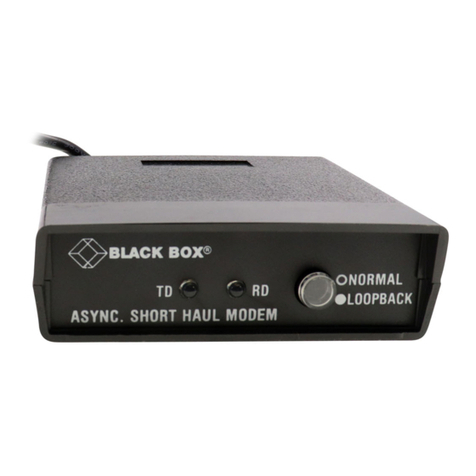
Black Box
Black Box ME800A Specifications
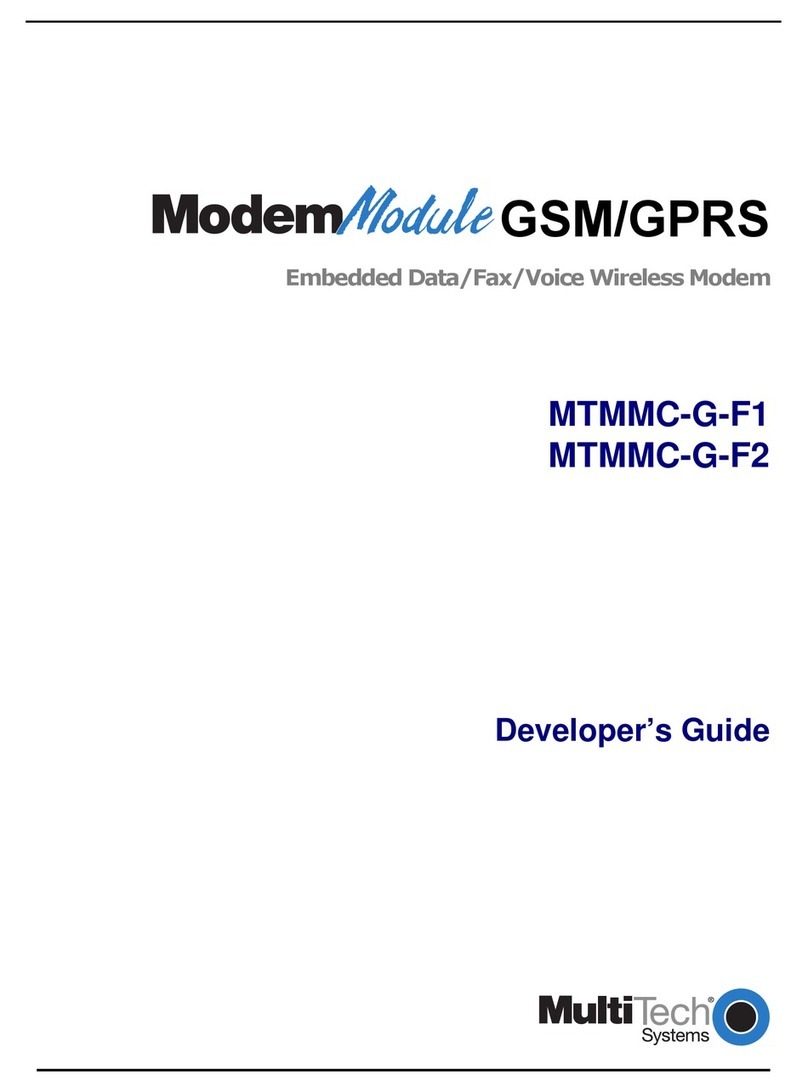
Multitech
Multitech MTMMC-G-F1 Developer's guide
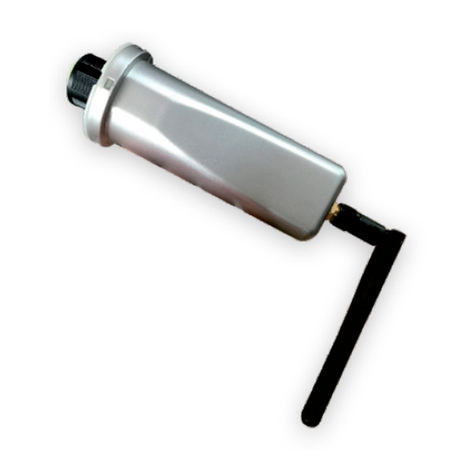
MasterPower
MasterPower Data Logger WiFi Stick Quick user guide
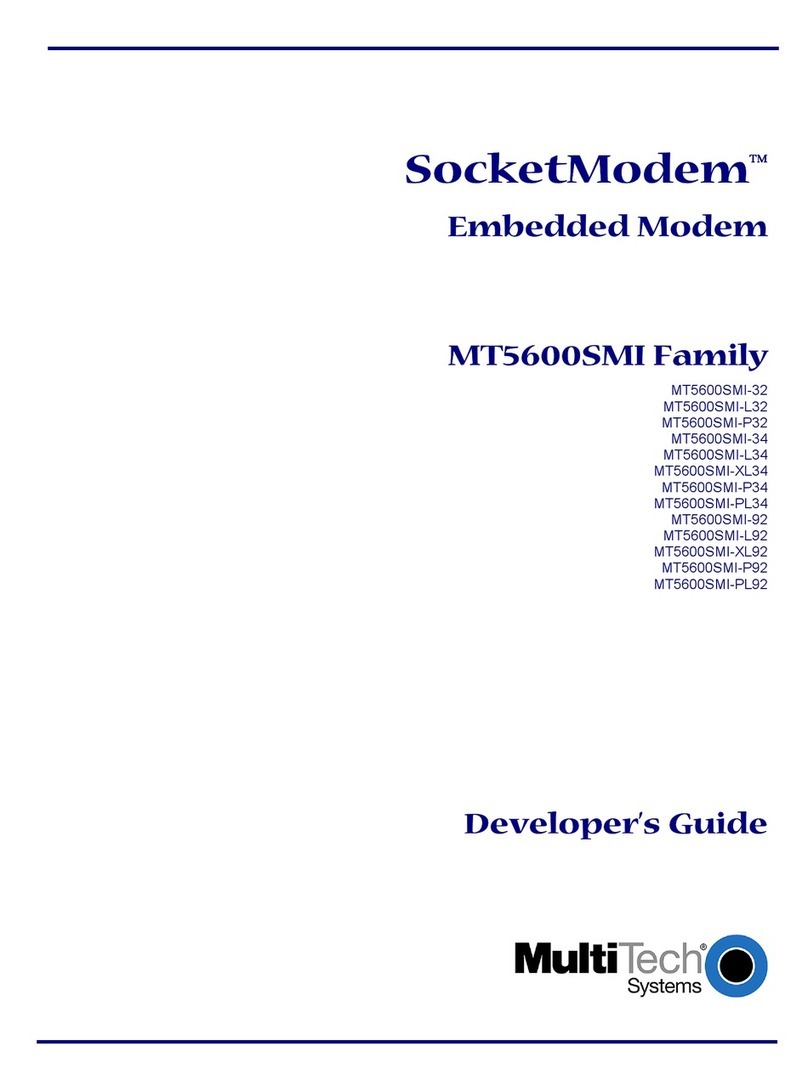
Multitech
Multitech SocketModem MT5600SMI-32 Developer's guide
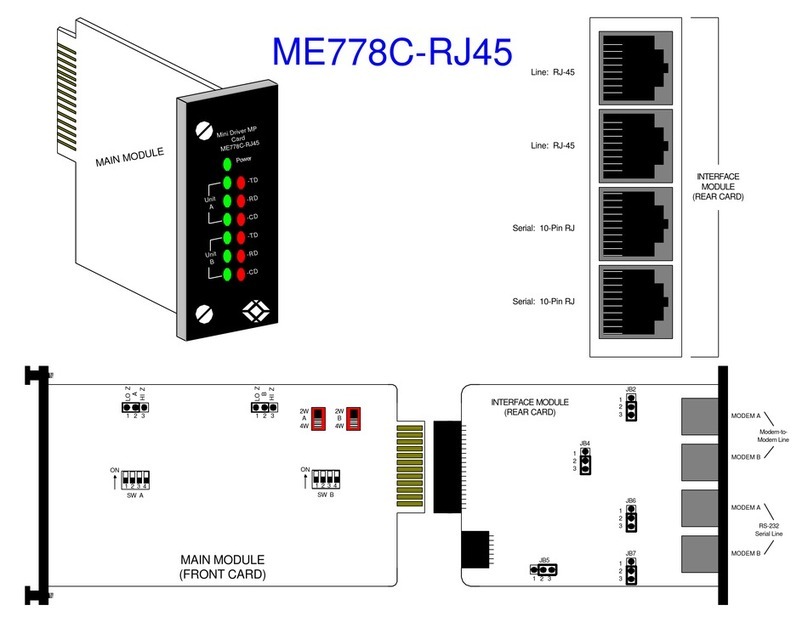
Black Box
Black Box ME778C-RJ45 quick start guide
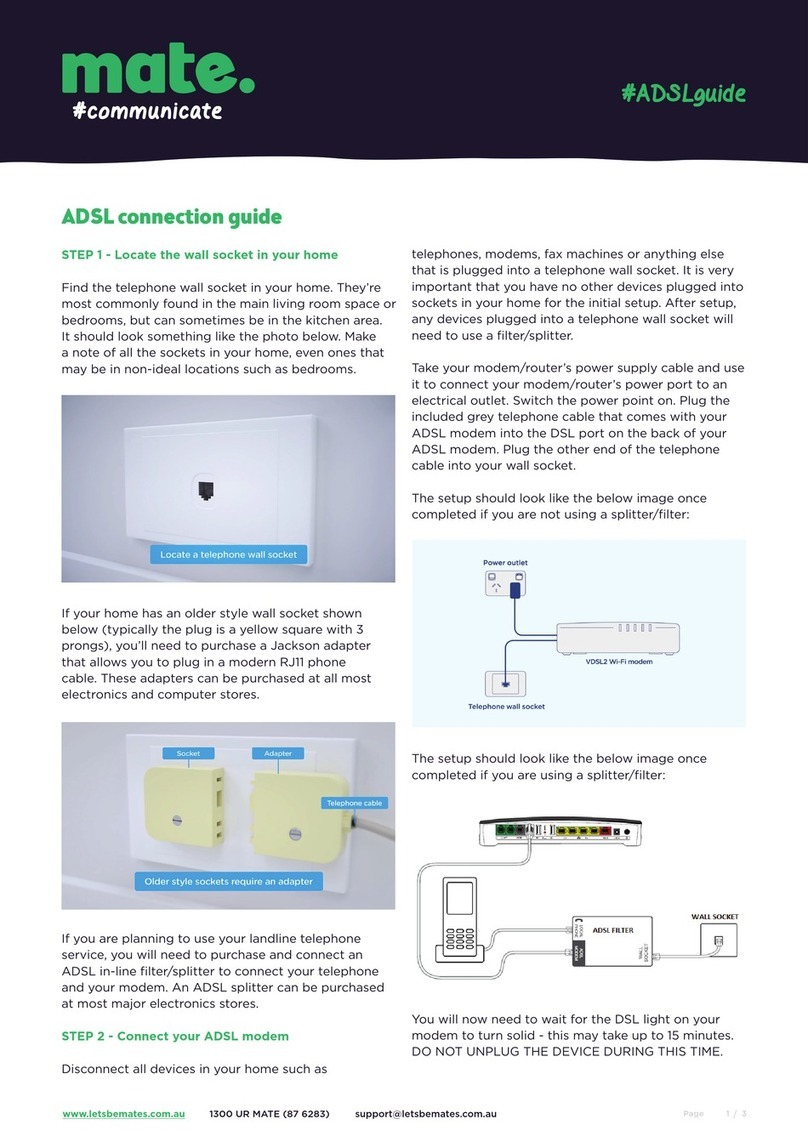
NetComm Wireless
NetComm Wireless Contact NF18ACV ADSLguide
